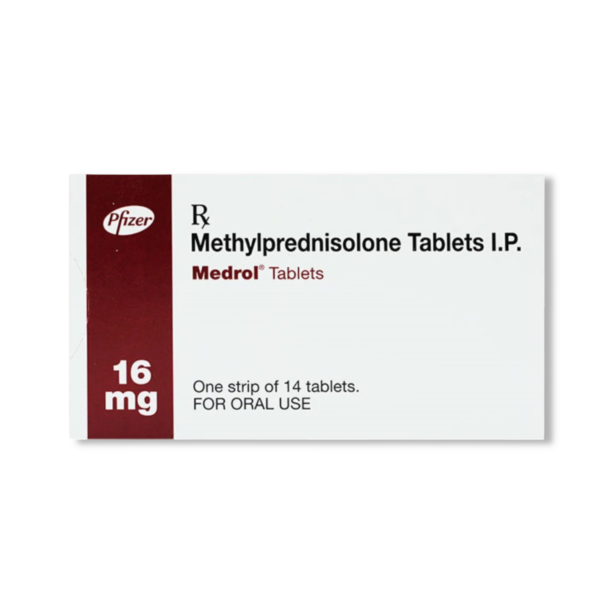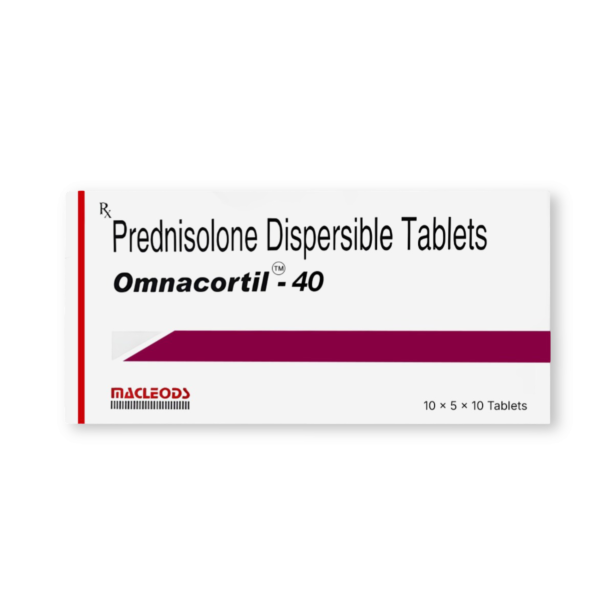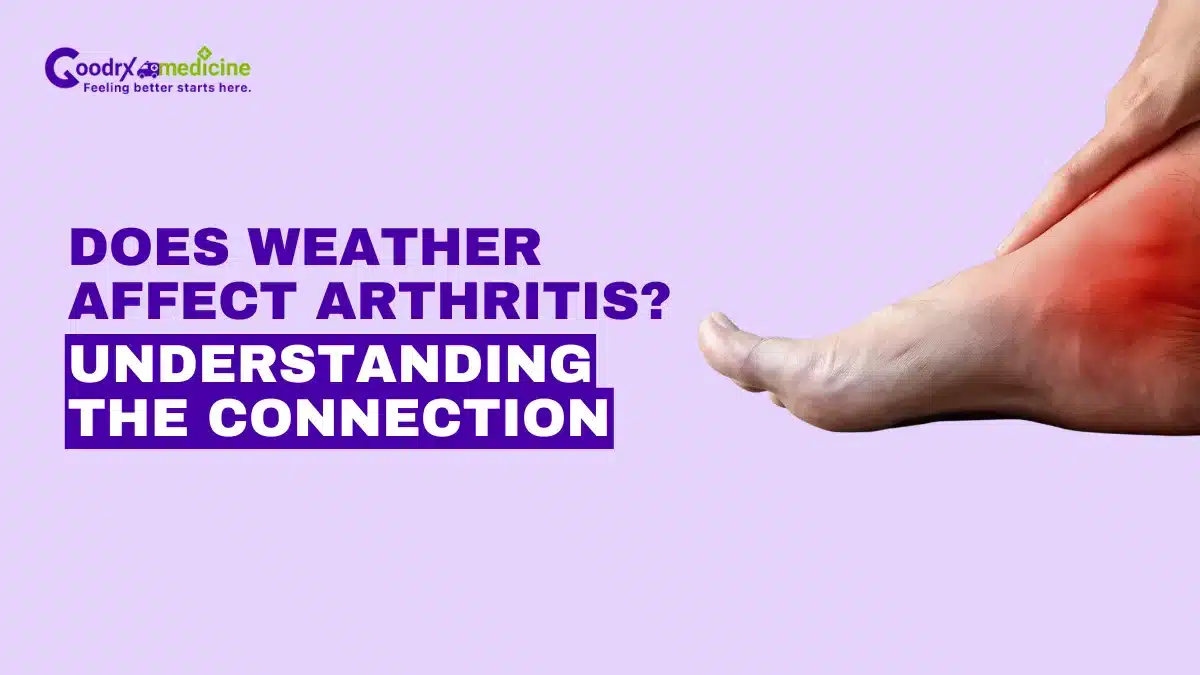Many individuals with Arthritis report joint stiffness, swelling, or discomfort that appears to worsen with changes in the weather, especially before rainfall or during colder days. This common experience raises the age-old question: Does weather affect Arthritis?
While some view this link as merely anecdotal or unreliable, research is beginning to look into how temperature, humidity, and atmospheric pressure shifts may influence inflammation and pain.
Understanding these patterns can offer valuable insight into managing symptoms more effectively. So, read on as we look into what science says about this intriguing connection between weather changes and Arthritis.
How and why does weather affect Arthritis?
Arthritis causes joint inflammation, pain, and stiffness, significantly impacting daily activities. Although Arthritis is primarily a chronic inflammatory condition, environmental factors like the weather may trigger symptom flare-ups in many individuals. People often report worse pain on cold, damp, or stormy days. Understanding how weather affects symptoms can help seek effective Arthritis pain relief strategies personalised to changing conditions.
Here is more information on the weather factors affecting arthritis symptoms:
Save up to 90% on your medicine bills

Medrol 16 Mg Tablet

Omnacortil 10 Mg Tablet

Depo-Medrol 40 Mg Injection 1ml

Omnacortil 40 Mg Tablet
Barometric pressure
Barometric or atmospheric pressure is the weight of the air around us. Joints can swell when it falls, such as before a storm, as tissues expand slightly due to less external pressure. This expansion may put pressure on surrounding nerves, increasing pain levels.
One Dutch study conducted in 2014, tracking over 200 patients with hip Osteoarthritis, found a slight but consistent rise in pain levels with changes in barometric pressure. Another 2022 review confirmed a significant correlation between barometric fluctuations and Arthritis pain.
This helps explain why many patients say they can “feel the rain coming” hours before the first drop falls.
Humidity and moisture
Humidity is another key player in Arthritis discomfort. High humidity can increase joint swelling by encouraging fluid retention in tissues. This adds pressure inside the joints and may increase stiffness and pain.
Data from the Arthritis Foundation shows a modest but notable association between high humidity and pain episodes. Similarly, a study in the American Journal of Medicine found that humid conditions were linked to worsened stiffness in Osteoarthritis patients.
Interestingly, one large-scale study analyzing over two million clinic visits did not find a strong link between rainy weather and Arthritis appointments. However, pain perception is highly personal, meaning individual sensitivity could be more pronounced even if population-wide data shows modest correlations.
Wind speed
Windy days may worsen Arthritis pain, particularly when combined with humidity and low atmospheric pressure. Research suggests that higher wind speeds modestly increase joint discomfort in people with Arthritis.
Analysis of weather-related pain data revealed a “significant yet modest” correlation between joint pain and wind speed, along with humidity and air pressure. Specifically, increases in wind speed were linked to higher odds of a pain flare-up.
One theory is that wind signals incoming weather changes, potentially affecting joint tissues. Though sensitivity varies, windy conditions can still contribute to symptom flare-ups for many individuals with Arthritis.
Temperature
Temperature extremes and freezing weather often make Arthritis symptoms worse. Cold air causes blood vessels to narrow, reducing circulation and leading to increased stiffness and pain. It also thickens synovial fluid, making joint movement harder and more painful.
Also, the impact of humidity on joint pain was more pronounced in colder weather conditions. Additionally, muscles tend to contract in the cold, which can place added strain on joints already inflamed by Arthritis.
People with Osteoarthritis often report seasonal symptom patterns, with increased stiffness and soreness in the colder winter months.
Weather effects on different types of Arthritis
Weather sensitivity can vary significantly depending on the type of Arthritis a person has. Let’s examine how it affects different forms of the disease.
Does weather affect Rheumatoid Arthritis?
Rheumatoid Arthritis, or RA, is an autoimmune condition characterized by systemic inflammation. Patients often report symptom flare-ups with changing weather, particularly during cold, windy, and humid conditions.
A study published in Rheumatology International found that all four major weather parameters, temperature, humidity, barometric pressure, and wind, could impact RA symptoms. Notably, patients experienced lower RA activity on sunny and dry days.
Some RA patients feel better in warm, dry climates, as heat can relax muscles and improve blood flow. However, others report that extreme heat and humidity cause dehydration and fatigue, aggravating their symptoms.
Does the weather affect Osteoarthritis?
Osteoarthritis (OA) is the most common type of Arthritis and frequently affects the knees, hips, and hands.
So, does weather affect knee Arthritis? Many people with OA say their symptoms worsen during cold or rainy weather.
A meta-analysis supported these observations, noting a significant association between weather and OA pain.
Interestingly, some OA patients report pain that intensifies a day or two before a weather event like a storm, likely due to gradual atmospheric shifts. Maintaining warmth in joints, especially knees, and continuing low-impact activity can be helpful during such periods.
Managing Arthritis symptoms in different weather conditions
While you can’t control the weather, you can implement strategies to decrease its impact on your Arthritis symptoms:
- Track weather patterns and symptoms: Use a journal or app to record pain levels alongside local weather data to identify your triggers.
- Layer clothing appropriately: During cold or damp weather, wear gloves, scarves, thermal underwear, and knee braces to keep joints warm and protected.
- Apply temperature therapy: In cold weather, use heating pads or warm baths to relax stiff joints. Cold packs can help reduce inflammation during hot, humid conditions.
- Control indoor climate: Use humidifiers or dehumidifiers to maintain comfortable indoor humidity levels between 40-60%. Keep your home at a consistent, comfortable temperature.
- Stay hydrated: Drink plenty of water, especially during hot weather or when using heating systems that can dry indoor air.
- Maintain gentle activity: Even when weather limits outdoor options, continue with gentle indoor exercises like stretching, yoga, or swimming in heated pools. Moving joints helps maintain flexibility and reduces stiffness.
- Plan ahead: Check weather forecasts and schedule demanding activities during favorable conditions. Consider timing medications before expected weather changes.
- Consult healthcare providers: Always discuss persistent weather-related symptoms with your doctor. They may recommend adjusting medications or Arthritis treatments seasonally.
Conclusion
So, does weather affect Arthritis? Scientific evidence convincingly says yes, though the impact varies widely among individuals. When barometric pressure drops before storms, joint tissues may expand and press on sensitive nerves. Cold temperatures restrict blood flow and thicken synovial fluid, while humidity can increase inflammation and tissue swelling. These aren’t just perceptions—they’re real physiological responses.
Research confirms that weather sensitivity is particularly strong in Osteoarthritis and Rheumatoid Arthritis patients. While large studies show modest but significant correlations with barometric pressure and humidity changes, individual experiences differ drastically.
Your “weather pain” pattern is likely unique—some suffer most from winter cold, others during summer humidity, and many feel worst just before rain arrives.
The good news is that you can significantly reduce weather-related flare-ups by tracking your personal weather triggers and implementing targeted strategies like temperature therapy, appropriate clothing, and planned activity.
Working with healthcare providers to develop seasonal medication adjustments completes a comprehensive approach to weather-proofing your Arthritis management plan.

Frequently Asked Questions
Does weather affect Psoriatic Arthritis?
Yes, weather can affect Psoriatic Arthritis, with many patients reporting increased joint pain during cold, damp conditions. Low temperatures make it harder for joints to warm up and move freely. While medications remain the primary treatment, studies suggest weather changes have a modest but noticeable impact on overall symptoms.
Does cold weather affect Arthritis in the hands?
Yes, cold weather often intensifies hand Arthritis symptoms by reducing blood circulation to fingers and causing joint stiffness. Cold temperatures thicken synovial fluid and trigger muscle contractions around joints. Wearing insulated gloves, performing regular hand exercises, and using paraffin treatments can provide significant relief.
Can dietary changes help weather-related Arthritis pain?
Yes, anti-inflammatory foods like fatty fish, olive oil, nuts, and colorful fruits and vegetables may help reduce weather-related Arthritis flares. These foods contain compounds that fight inflammation naturally. Staying well-hydrated and limiting processed foods high in sodium can also prevent fluid retention, which worsens joint pain during humidity changes.
Is water exercise beneficial for weather-sensitive Arthritis?
Yes, water exercise proves highly beneficial for weather-sensitive Arthritis patients. The buoyancy reduces joint pressure while providing gentle resistance. Heated pools (around 83-88°F) are particularly effective during cold weather, as warm water relaxes muscles and increases circulation to painful joints.
When referencing outside resources, GoodrxMedicine always provides full citations. To learn more about the measures we use to maintain the quality of our content, please review our Content Information Policy.











